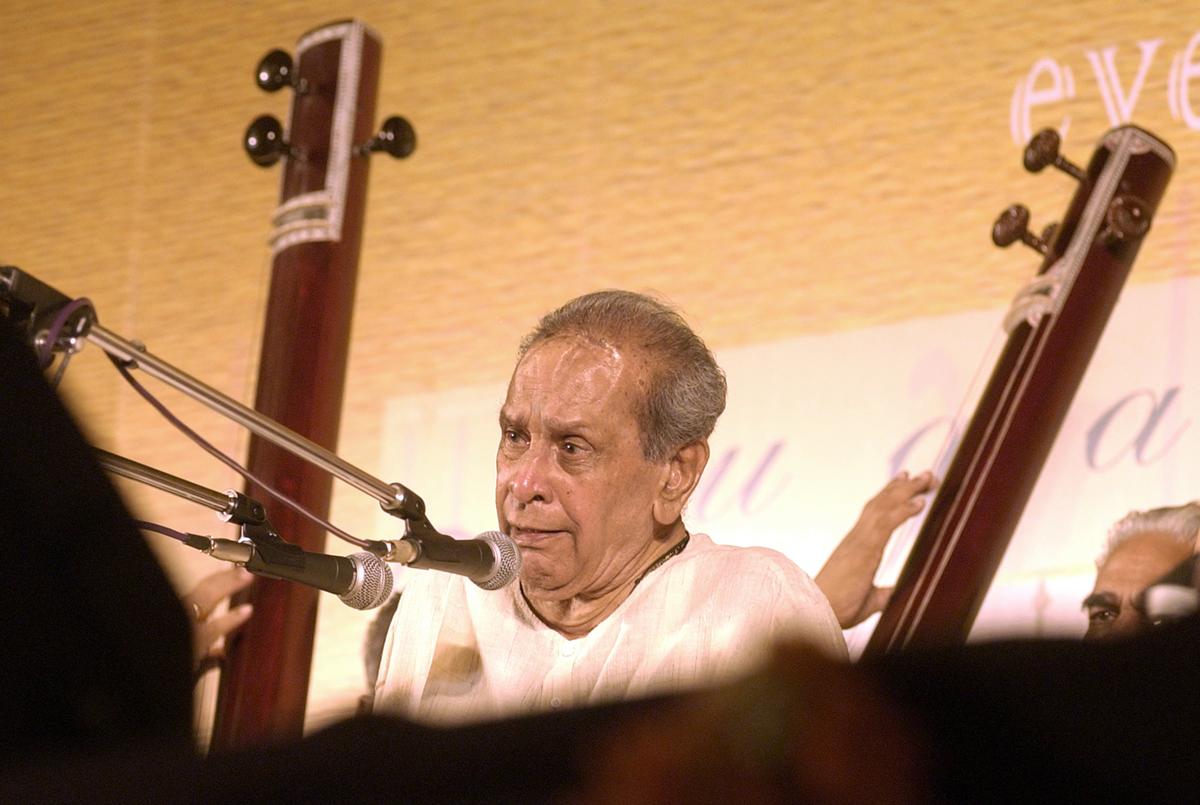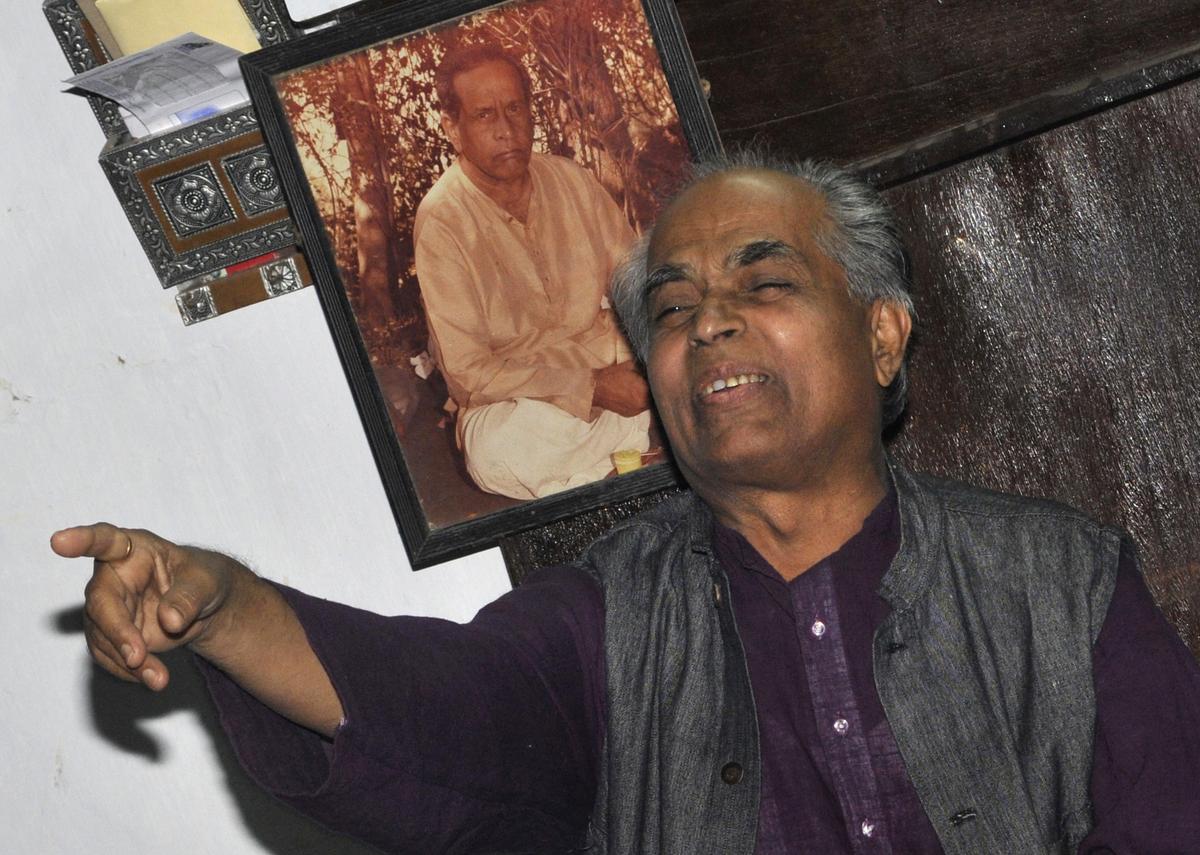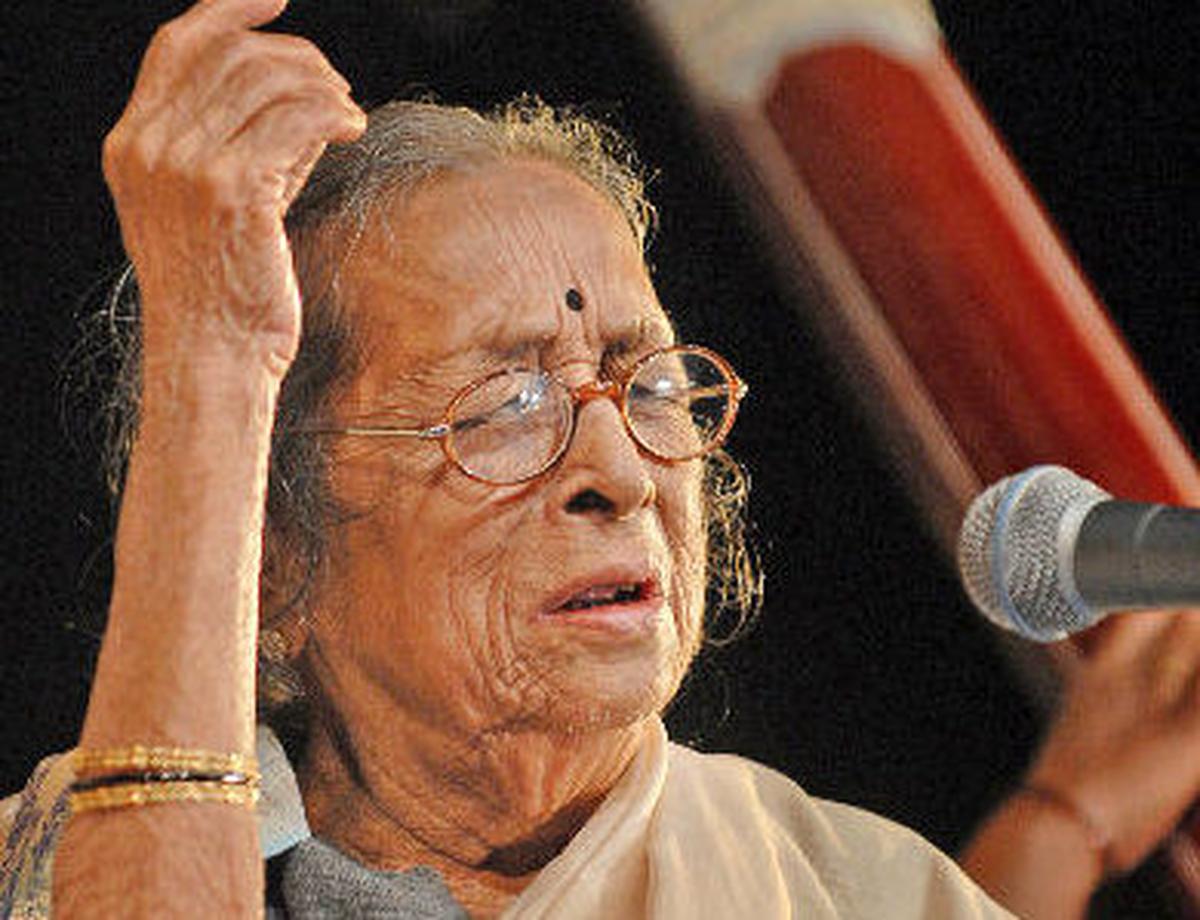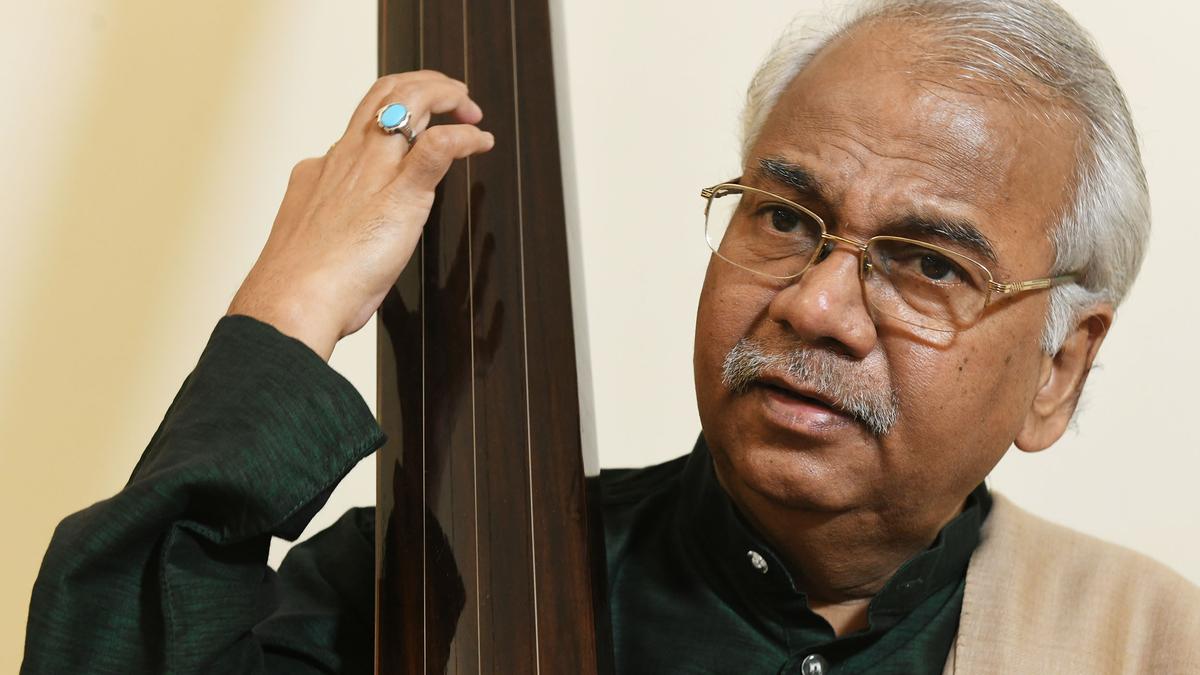Dr. Nazaraja Rao Havaldar. , Photo Credit: By Special Arrangement
Kirana Gharana singer Dr Nagaraj Rao Havaldar has dedicated his life to preserving and promoting the rich classical music heritage of Karnataka. Madhav Gudi, a disciple of Pt., who was himself a student of Bharat Ratna Pandit. The music of Bhimsen Joshi, Dr. Havaldar epitomizes the depth and subtlety of a renowned lineage.

Bhimsen Joshi Photo Credit: Bhagya Prakash
Recently he presented Sangeeta Ganga KaveriA lecture-demonstration, organized by Azim Premji University at the Bangalore International Center (BIC), highlights Karnataka’s unique position as a state that has nurtured stalwarts in both Hindustani and Carnatic traditions.

Madhav Gudi Photo Credit: Bhagya Prakash
This legacy is the work of royal patrons like the Wadiyars of Mysore, who fostered vibrant cultural exchange with the Baroda court, enriching Karnataka’s musical landscape. The flourishing of Hindustani music in North Karnataka and the resilience of Carnatic traditions in the South are testament to this diversity.
Sawai Gandharva
In this interview with The HinduHavaldar highlights the historical, cultural and social roots of Karnataka’s dual musical heritage and discusses how these traditions continue to inspire artists and audiences across generations.

Gangubai Hangal Photo Courtesy: Bhagya Prakash_K
How did Karnataka inherit a rich heritage that combines Carnatic and Hindustani traditions? What are the historical reasons for this?
The kings of Mysore were responsible for the rich Hindustani and Carnatic traditions we have today. He used to invite artists from cities like Baroda to his court, which involved a journey of at least four days. After Mysuru, they will eventually perform in Belagavi, Dharwad, Hubli and other places. In this way gradually the seeds of Hindustani music were sown in North Karnataka. The influence of Bombay Natya Sangeet on North Karnataka was also very strong in those days, which also contributed to the Hindustani traditions in Karnataka.
Did these two traditions remain separate or did they mix together in creative ways? Can you give an example of if they interacted constructively?
Before the 13th century we had only one form of classical tradition. Overall the content of Indian classical music was spiritual and religious… Hindustani music Raga Bhairav Is Mayamalvagaula Raga In Carnatic music, Raga Malkouns Is Hindola Raga, Raga Shuddha Sarang Is Mohankalyani Raga And so on. Both traditions always contain similar ragas, because they come from the same source.
Although much is said about the North-South divide in Karnataka even years after integration, do you think it has led to cultural enrichment despite the politically troubling issues?
Ustad Dagar calls me during every festival to congratulate me, and vice versa. Bhimsen Joshi’s guru was Sawai Gandharva and his guru was Ustad Abdul Karim Khan. When Abdul Karim Khan started his music school in the 1900s, he took a written bond and commitment from his students that they would study for at least seven years. Because he gave great importance to his art. Abdul Karim Khan taught Sawai Gandharva, who in turn taught a Parsi, a Madhva, a Vokkaliga and nothing in between. Music is still a great unifying and connecting factor.
Dharwad was traditionally the center of Hindustani and Mysuru Carnatic music. Has the music scene of these two cities changed?
Not much change has been seen in the music scenario. Dharwad is still the center of Hindustani and Mysore is the center of Karnataka. However, what has changed is that the number of performers has increased due to the artificial increase in opportunities. Earlier it was only Dussehra Utsav or Hampi Utsav, but nowadays there is a Utsav or festival in every district. Who selects the artists for these festivals? Local MLAs… what is their expertise in selecting who will demonstrate? He will have to go.
Would you say that Bengaluru’s music scene is vibrant or has it been affected by commerce as well as logistical issues like traffic and absence of venues?
Despite having transport facilities like metro, there are still many islands in the city. For example, Malleshwaram is an island for music lovers, but if you do an event in Basavanagudi, the Malleshwaram audience will think twice about coming. Furthermore, the generation that listens to traditional music is over sixty years of age. With such visitors, they tend to have very protective children who don’t want to send them, or elders who are not independent enough to go on their own. With COVID-19, a new threat emerged: the convenience of putting things online. Now, whenever I have a concert, people ask if it is available online. These are new challenges for musicians.
He is known for his rendition of both Das and Vachan literature. How have these two great literary traditions influenced our music?
These two literary traditions have greatly influenced our music. My Param Guru Bhimsen Joshi had started a unique program called Dasavani, where he would sing ten verses for four hours with classical music traditions. There was no compromise in terms of classical rendering. He set a trend, and it inspired many others to start music programs and concepts like Sharanavani, a program on words. Dussehra verses were sung in Mysuru Darbar and more such programs were organised.
You have not only been an artiste, but you have trained many young talented singers and musicians, including your children. As the years go by, do you think that children or music lovers of this age have the same passion for learning music that your generation had many years ago?
There is an unhealthy rush among many youth these days to become artists. For example, 20 years ago, a couple came to me with their teenage child and said that their son had qualified for the semi-finals of a reality show and he had to sing. Nambide Ninna Nada DevatayeWhich was sung by Bhimsen Joshi in the film evening raga,
He said that I would be paid huge sums of money, my teaching sessions would be telecast and I would get a lot of publicity. This song is not an easy song. When Bhimsen Joshi sang this song, he was around 40 years of age and had 30 years of practice in music. But these parents wanted me to teach this song within a week to a 14-year-old child who had never even held a tanpura in his hand. I told him that if Yuvraj Singh can teach me to hit six sixes in a week then I will teach his son to sing. They never got back to me. If you want to learn music you have to learn to be patient.
published – November 12, 2024 09:00 AM IST
